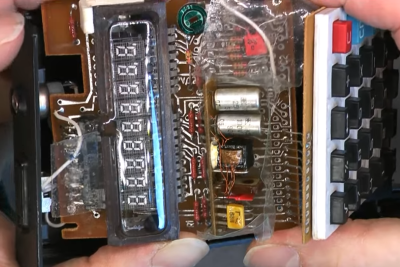Sometimes a project forms itself around a component rather than an idea, and thus it was that [Maximilien] found himself building a data rate monitor for the connection between two data centers. Some MD0657C2-R LED dot matrix displays for not a lot needed a project.
The displays are mounted in groups of four on small PCBs, driven by a MAX6952, which are then controlled by a Pi Pico. There are several display panels in the project, each of which is a pained and laser-etched acrylic sheet with a pair of the LED boards mounted behind it. These in turn go on the front of a wooden enclosure, with a set of LED ring lights behind to illuminate the etched parts of the panels. Each display panel has its own Pico, daisy chained together and driven by a Pico W that supplies network connectivity.
As you might expect, this isn’t the first status panel we’ve brought you over the years.




















